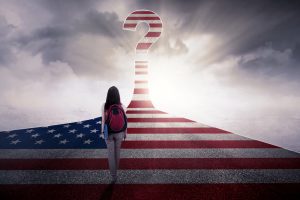Crisis Intervention specialists deal with an array of issues. Usually issues of self harm, harm of others and suicide are a very common theme. In crisis, logical thinking and hope are erased and the person can sometimes do things out of character that are very lethal in nature. Understanding suicide, suicide assessment, prevention and intervention are key components of helping individuals in crisis not make a permanent and fateful decision.

It is critical for crisis counselors, grief counselors, pastoral care givers and ministry, licensed mental health professionals, as well as those in healthcare to have a strong training and educational background in suicide and crises of lethality. AIHCP offers certifications in Grief Counseling but also in Crisis Intervention to help train members in those fields with the additional knowledge and abilities to handle crisis of lethality.
Suicide
While in the past, AIHCP has offered blogs, as well as video content on the nature of suicide, this particular blog will focus on the crisis element of it. It will identify suicidal signs, assessments, but also focus on intervention in particular.
James points out that a person in suicidal crisis is engaged in an expressive act of homicide where emotional state looks to reduce psychological pain (2017, p. 203). According to statistics, James point out that 600, 000 to 100, 000 suicides are attempted each year in the United States and 30, 000 to 60, 000 die each year in those attempts, with 19, 000 permanently injured (2017, p. 204). While different groups within the US have different rates of suicide as compared to others, the leading group is older white males.
Theories surrounding suicide share many common features but also have different emphasis on certain reasons why one attempts to kill oneself. Freud’s psychodynamic theories saw suicide as a reaction of some inner conflict with external stressors (James, 2017, p. 206). Erickson saw reasons for suicide correlated with developmental issues that prevented the person from advancing and reaching certain goals in life. Individuals who become stagnant and unable to develop sometimes choose suicide as an option to escape (James, 2017, p. 206). Escapist theory views suicide as the only way out of a bad situation during fight or flight. Within this theory, individuals feel they fell short, blame themselves, focus on narrow deficits only, and only see a view of perfectionism that if not met can only end in suicide due to the hopelessness perceived (James, 2017, p. 206). Hopelessness remains a common theme in all situations where the person feels they have no power over the situation.
Another important theory was developed by Edwin Shneidman, the founder of suicidology. In understanding suicide he measured one’s psycheache or pain in the mind, one’s perturbation or the degree of the pain, and the press or stress due to external factors (James, 2017, p. 206), With the combination of these things, Shneidman saw how psycheache frustrates or blocks psychological needs leading to hopelessness and suicide and reaching the state of critical mass to activate suicide.
Durkeim in the 19th Century proposed the sociological theory which looks at a person’s connections to society and how social norms and society based on a person’s integration with those norms plays a large role. Egoistical suicide refers to one’s lack integration with any group. Anomic suicide refers to when economic and financial systems of society break down all around the person. Altruistic suicide refers when a person commits suicide for cultural reasons or the perceived better good according to the society. Fatalistic suicide refers to if a person is an intolerable or unescapable situation such a concentration camp (James, 2017, p. 207). According to Van Orden interpersonal states are also key in the mind of those contemplating suicide. Suicidal individuals may acquire capability by decreasing innate fear of pain and death gradually. In their personal views, they perceive themselves as burdensome to others as well as failing to belong to anyone or find attachment to anything (James, 2017. p. 207). Existentialism and meaning also play an important role in suicide theory. Ideas on death, existential isolation, meaning and meaningless in making sense of the world and the freedom of existentialist thought to make choices all play a role in the construction of existentialist thought. When challenges to existence and death are overwhelmed and an existentialist anchor is lost, then many individuals can fall into hopelessness without any reason to exist (James, 2017, p. 208).
Another interesting theory follows a basic suicide trajectory model based on various risk factors that correlate with suicide. This includes, biological, substance abuse history, genetic predispositions, gender, self esteem, psychological maladies, cognitive thinking and environmental stressors (James, 2017, p. 207). Psychology also points to imbalances within the brain, neurochemical reactions that do not allow a person to better respond to a situation (James, 2017, 208).
From these theories and multiple other ones, one has a better understanding that suicide is rarely a free choice but is committed in a state of emotional turmoil without true cognitive reasoning. This is why so many religious views on suicide as a choice or sin have been replaced with a better recognition that most if not all are victims of it.
Characteristics of Suicidal Individuals
For the most part, those thinking of suicide exist in an acute state of crisis or a chronic state of depression that leads to certain characteristics that manifest emotionally, socially, mentally and physically.

Situationally, individuals face an endurable pain they cannot overcome. A stressor frustrates the psychological need (James, 2017, p. 209). Hence situations involving trauma, death, loss, finances, relationship or anything that creates a perceived unbearable loss appears. Motivation wise, individuals look to seek a solution and that solution entails to remove the stressor via cessation of consciousness. Accompanied with this are the affective emotions of hopelessness and helplessness. Cognitively, individuals see solutions in a very narrow scope with out any alternatives to think their way out of the situation. Relationally, an individual wishes to communicate intent and find mutual justification in it and acknowledgement of that right to do so. Serially, characteristics reveal a long history of trying everything else but no other option remains (James, 2017,p. 209).
Within these characteristics of the suicidal mind, it important to dismiss certain myths that distort. First, one needs to dismiss fears of discussing suicide as if it will cause it. In fact, discussing suicide and being very upfront is key. Second, one needs to dismiss the notion that those who say they will commit suicide rarely carry through with it. In fact, many who say they are contemplating are very high risk of attempting it. To the individual suicide is perceived as a very rational act. Third, individuals who commit suicide are insane. Most who commit or attempt suicide are only acutely affected with emotional issues. Fourth, suicide is only impulsive. In fact, most suicides are planned and plotted outside acute crisis. Fifth, suicide is painless. Many suicides can be very gruesome and some go awry and very wrong. Sixth, suicidal thoughts are rare. In fact, they are more common than one may think with 8.3 million have some type of suicidal ideation (James, 2017. p. 212).
Suicide Assessment is Key
Assessment is critical in saving a life. While some crisis specialists deal with suicidal individuals in an acute and heated moment, many suicides are well planned and plotted. Counselors need to be aware of the possibility and assess the lethality
James points out that there are a variety of verbal clues, statements and written letters. As well as behavioral clues such as self harm or isolation. Also situational clues that involve death of another person, financial woes, loss job, or divorce should be acknowledged. In addition, syndromatic clues such as depression, hopelessness and unhappiness with life can play key indicators in possible suicidal. This is why it is so important to also ask someone in assessment (2017, p. 212).
Another tool to utilize is PATHWARM. This is an acronym from the American Association of Suicidology. It utilizes the letter within the acronym to better identify various warning signs. Within the acronym is: Ideation, Substance Abuse, Purposefulness, Anxiety, Trapped, Hopelessness, Withdraw, Anger, Recklessness and Mood.
There are many, many assessment keys, questions, or triages one can utilize. We will briefly go over a select few.
First, the basic clinical interview is essential in determining suicidal ideation. Within it is a long laundry list of observations and questions. Here are a few: Does the person exhibit suicidal intent or tendencies? Does the person have a family history of suicide? Does the person have past suicide attempts? Does the person have a specific plan? Has the person experienced a death recently? Does the person have a history of drugs and substance abuse? Does the person display radical changes in mood and behavior? Does the person display hopelessness? Has the person experienced past trauma? Has the person discontinued medication? Does the person exhibit extreme emotions? Has the person faced financial troubles or loss of job? Does the person feel threatened? Does the person see everything as all or nothing? Does the person feel as if he or she does not belong? Does the person struggle with identity and self esteem? Does the person have access to firearms? Has the person explored suicide through online search or literature? Has the person not seen a medical professional within the last 3 to 6 months? (James, 2017, p. 215).
SIMPLE STEPS is another acronym that can utilized in assessment during interview. Again it emphasizes the importance of asking the question are you thinking of killing oneself? Within the acronym are the following points. Suicidal? Ideation? Method? Pain? Loss? Earlier attempts? Substance abuse? Troubleshooting for alternatives? Emotions? Parental history? Stressors? (James, 2017, p. 216-17). This triage captures the basic essence again of all assessment in that it asks the difficult question and looks to identify potential lethality and danger of a plan. Not all cases may present an immediate acute threat while others may require immediate intervention and reference to medical professionals or notification of authorities and family.
Suicide Intervention
In intervention, whether in acute setting or discussing possible plans of a person to commit suicide, professionals need to not judge the person, or demean the person’s perceived tragic nature of life. Instead, crisis professionals are encouraged to gain an understanding, form a bond and offer alternative options.
The Three “I”s are essential to know if looking to defuse suicidal situations. The person feels the situation is inescapable, intolerable and interminable (James, 2017,p. 218). Hence it is important to help the person feel secure, less painful, and offer hope with solid solutions. When a person is facing crisis, they may feel there is no other way out and may need alternatives presented and applied to the situation. In addition, the crisis counselor may try to help the person reframe the situation with attributes of CBT to see the situation from a different light. The crisis counselor must also help the individual face the pain and discover that is not forever. Helping focus on not so much the lethality but the perturbation of the person can help the person see more clearly, utilize problem solving abilities, and offer alternatives to the current issue. Addressing stressors and helping the person see hope is the biggest key. At this core, Crisis Management looks to help the person plan a response to suicidal issues (James, 2017, p. 222).

In counseling, professionals should help clients reframe. This involves not only a new line of thinking but also validating emotions and discussing future suicidal behaviors and how to counter them. It is important to help the person learn real problem solving skills for issues but also address teaching individuals how to cope with pain and emotions in better ways. In addition, counselors can help clients find better social connections to prevent isolation as well as play an important role in life coaching with positive thoughts, plans and goals. Importantly as well, a counselor should obtain from the person a no harm commitment through a suicide “Do not Harm Contract” or “Stay Alive” contract which the individual signs. It is important to let the person know he or she is not alone and can reach out or call when certain triggers may appear that seem unbearable (James, 2017, p. 227)> In some cases, calls to the authorities may be needed, or a person may need observed for a period of time before the crisis has subsided.
Conclusion
Suicide is not simply a call for help but a true crisis situation that demands attention. Through warning signs, assessment and proper intervention, crisis counselors can save lives. It is also important to note that suicide is not something rationally chosen but one that is mentally and emotionally chosen when in a illogical state of mind. Hence negative social stigmas need removed and professionals as well as society need to see these individuals who attempt or complete suicide as victims. This is why it is so important to be educated on the subject and listening and observing with empathy for those who shows signs of suicidal ideation.
Please also review AIHCP’s Crisis Intervention Program and see if it meets your academic and professional goals. The program is online and independent study and open to qualified professionals seeking a four year certification. Counselors, first responders, clergy and other mental health professionals can play a key role crisis intervention and saving lives from suicide.
Resources
James, R & Gilliland, B. (2017). “Crisis Intervention Strategies”. (8th). Cengage
Additional Resources
Clay, R. (2022). “How to assess and intervene with patients at risk of suicide”. APA. Access here
Are you thinking about suicide? How to stay safe and find treatment. Mayo Clinic. Access here
Ryan, E. & Oquendo, M. (2020). “Suicide Risk Assessment and Prevention: Challenges and Opportunities”. Psychiatry Online. Access here
Suicide and suicidal thoughts. Mayo Clinic. Access here
Suicide Prevention Tools for Public Health Professionals. CDC. Access here
988 Life Line Access here






















